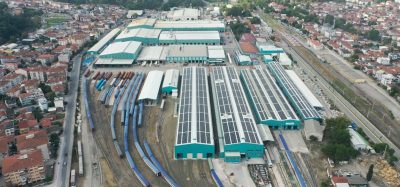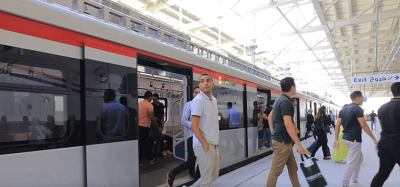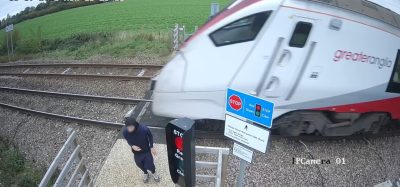The Finnish-Russian joint rail project
Posted: 23 August 2005 | | No comments yet
A joint project between Finland and Russia will gradually shorten the journey time on the Helsinki-St. Petersburg line to approximately three hours. Modernising the rail connection between Helsinki and St. Petersburg is one of the most important joint development projects between Finland and the Russian Federation. In the background is both countries’ desire to develop transport connections and make the necessary investments. The project will be completed in stages. By 2008 the rapidly developing St. Petersburg region will be less than four hours by train from Helsinki. Ultimately the journey time will be reduced to three hours.
A joint project between Finland and Russia will gradually shorten the journey time on the Helsinki-St. Petersburg line to approximately three hours. Modernising the rail connection between Helsinki and St. Petersburg is one of the most important joint development projects between Finland and the Russian Federation. In the background is both countries' desire to develop transport connections and make the necessary investments. The project will be completed in stages. By 2008 the rapidly developing St. Petersburg region will be less than four hours by train from Helsinki. Ultimately the journey time will be reduced to three hours.
A joint project between Finland and Russia will gradually shorten the journey time on the Helsinki-St. Petersburg line to approximately three hours.
Modernising the rail connection between Helsinki and St. Petersburg is one of the most important joint development projects between Finland and the Russian Federation. In the background is both countries’ desire to develop transport connections and make the necessary investments.
The project will be completed in stages. By 2008 the rapidly developing St. Petersburg region will be less than four hours by train from Helsinki. Ultimately the journey time will be reduced to three hours.
Join our free webinar: Rail cyber-security in a time of technological and regulatory transformation
Join our expert panel, including speakers from Nokia and Siemens Mobility, to explore the critical convergence of cybersecurity and 5G rail comms.
Date: 3 Dec | Time: 15:00 GMT
Can’t attend live? No worries – register to receive the recording post-event.
The new train connection will be considerably faster and more comfortable and have a high service level. It will provide a competitive alternative to road and air transport.
On the Finnish side the line will be used for mixed traffic.
Advantages
Developing rail transport is also an important part of the European Union’s transport policy, the goal of which is to improve the compatibility and competitiveness of transport networks as well as environmental protection and traffic safety.
The fast line between Helsinki and St. Petersburg will connect the EU and its most important neighbour on an entirely new level. The Helsinki-Vainikkala line is in fact on the EU’s list of priorities.
Developing the fast train traffic will also benefit the domestic train traffic in Finland. Traffic in the eastern regions will especially profit from this development.
Economy, tourism and cultural exchange
The new line will provide a fast, safe and modern rail connection between the St. Petersburg region, which has about seven million inhabitants, and the Helsinki region, which has over a million.
The line will also link with the existing fast connection between Moscow and St. Petersburg, so it will also have considerable significance for economic growth in the Moscow region and surrounding areas. In addition to the economy, the fast line will boost tourism and cultural cooperation.
The rail project will accelerate economic growth in the northern EU and it is also a concrete example of cooperation between the European Union and the Russian Federation and the practical implementation of the Northern Dimension.
Three times as many passengers
The number of passengers travelling by rail between Helsinki and St. Petersburg is expected to treble from the present figure of 155,000 a year.
Raising the maximum axle load to 25 tonnes and speeding up border crossings and customs will provide a good basis for growth in freight traffic between the EU and Russia. Traffic to and from the Far East will also be improved.
Improvements on the line and at the border
It currently takes five hours and 15 minutes to get from Helsinki to St. Petersburg by rail. According to an agreement between Finland and Russia, fast passenger services will start operating in 2008 and the journey time will gradually be reduced to about three hours by 2011.
Since Finland and Russia use the same railway gauge, this can be accomplished by modernising both countries’ rail network, speeding up border formalities and shifting to modern new rolling stock. The cost estimate for the project is over €1.7 billion.
Projects in Finland
On the Finnish side the most important project is the direct line from Kerava to Lahti, which will start operation in 2006. This alone will shorten the journey time by half an hour. The Finnish Government has also approved the renewal of the Lahti-Luumäki line section by 2011.
Further plans call for an additional track between Luumäki and Vainikkala, which will be necessary when passenger traffic picks up. The total cost estimate for rail projects on the Finnish side is ?566 million, with the goal being to reduce journey time by 50 minutes.
Feasibility of PPP model being studied in Finland
The renewal of the line between Lahti and Vainikkala can possibly be financed with a private-public partnership (PPP) model. The Finnish Rail Administration is presently studying the feasibility of this option. The Lahti-Vainikkala line section is part of the busiest rail network in the Northern Triangle. Its renewal is indispensable for the opening of fast services between Helsinki and St. Petersburg.
The core of applying a PPP model to the Lahti-Vainikkala line section is to procure a service package for a set period (such as four years for construction plus 15 years after completion), with charges based mainly on keeping permanent way in service. The project would require authorisation to spend somewhere between ?300 million and ?350 million. This would include engineering, construction, financing and maintenance during the construction period and the following 15 years.
Using a PPP model would avoid tying the project to the state budget. In addition to construction work it would include maintenance and financing. The idea in applying the PPP model to the rail project is to procure a service package for a set period. The service charge paid by the customer, i.e. the Finnish Rail Administration, would be based on how services can operate on the line section.
Conducting the project with a PPP model would serve as a pilot, and the information obtained in the process would support the use of a similar model in future rail projects.
Measures on the Russian side
On the Russian side the objective is to shave off one hour and 25 minutes. This will be achieved by rerouting freight traffic to the north of St. Petersburg on its way to Vyborg and by modernising the line between St. Petersburg and Vainikkala to meet the needs of fast passenger traffic. This requires renewing track, eliminating level crossings, straightening curves, replacing switches, upgrading feeder stations and overhead lines and developing safety equipment. Altogether this will cost about €1.1 billion, according to estimates.
The border zone will be expanded to include the line section between Buslovskaya and St. Petersburg so that border formalities can be handled on moving trains.
New rolling stock
Reducing the journey time to three hours requires modern tilting-body trains. Since Finland and Russia have different electrical and safety systems, new trains will need to have double-current technology and safety equipment in tandem. This will eliminate the need to change locomotives at the border.
The final selection of a train type is up to the rail operators, RZD in Russia and VR Limited in Finland. These will work out details regarding the procurement and ownership of rolling stock as well as services. The cost of procuring rolling stock is between €30 million and €40 million.
Stay Connected with Global Railway Review — Subscribe for Free!
Get exclusive access to the latest rail industry insights from Global Railway Review — all tailored to your interests.
✅ Expert-Led Webinars – Gain insights from global industry leaders
✅ Weekly News & Reports – Rail project updates, thought leadership, and exclusive interviews
✅ Partner Innovations – Discover cutting-edge rail technologies
✅ Print/Digital Magazine – Enjoy two in-depth issues per year, packed with expert content
Choose the updates that matter most to you. Sign up now to stay informed, inspired, and connected — all for free!
Thank you for being part of our community. Let’s keep shaping the future of rail together!







